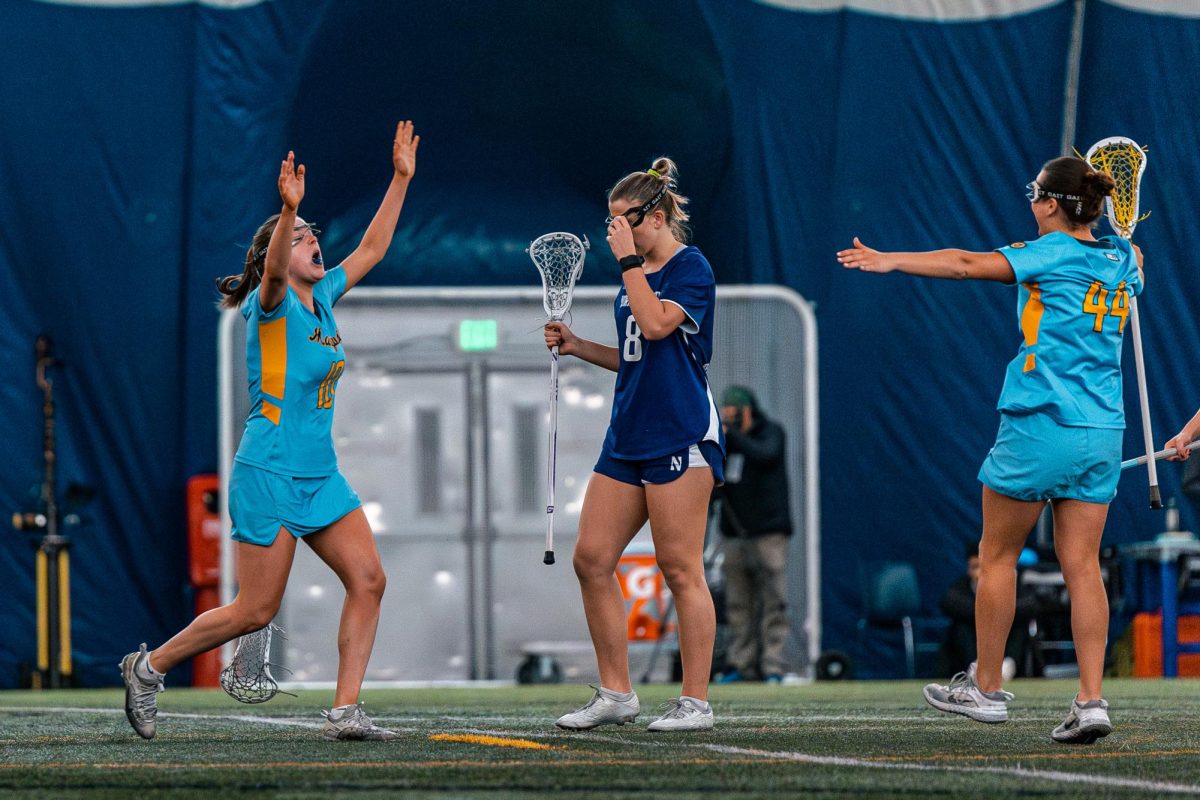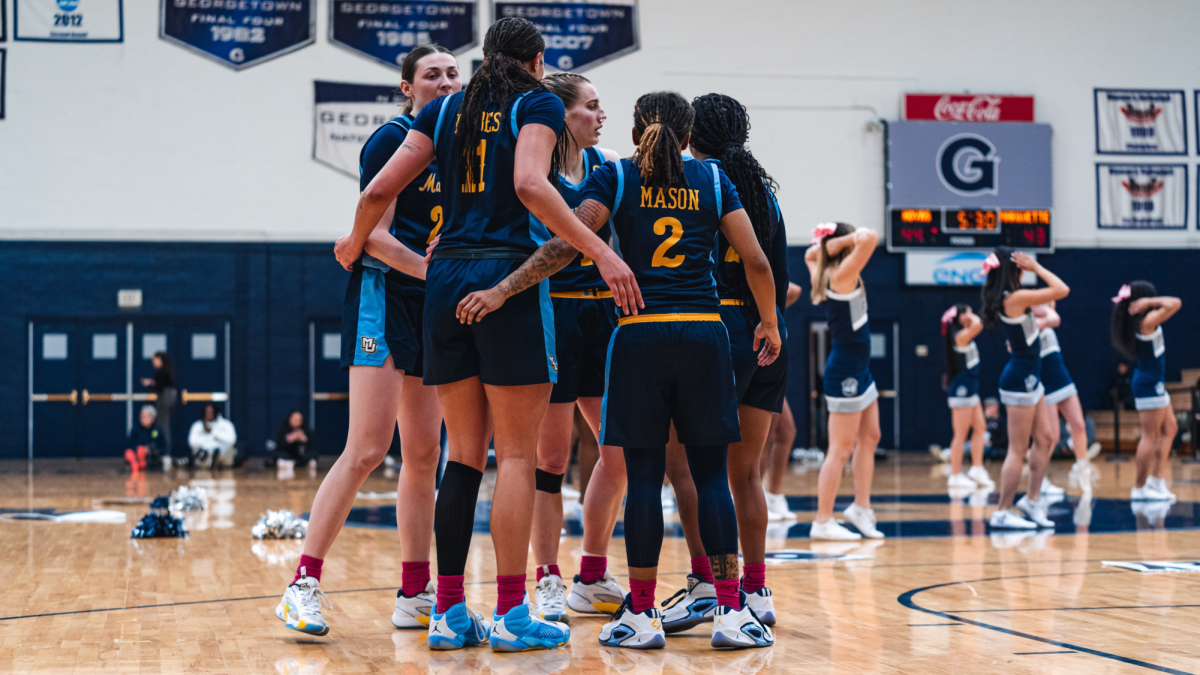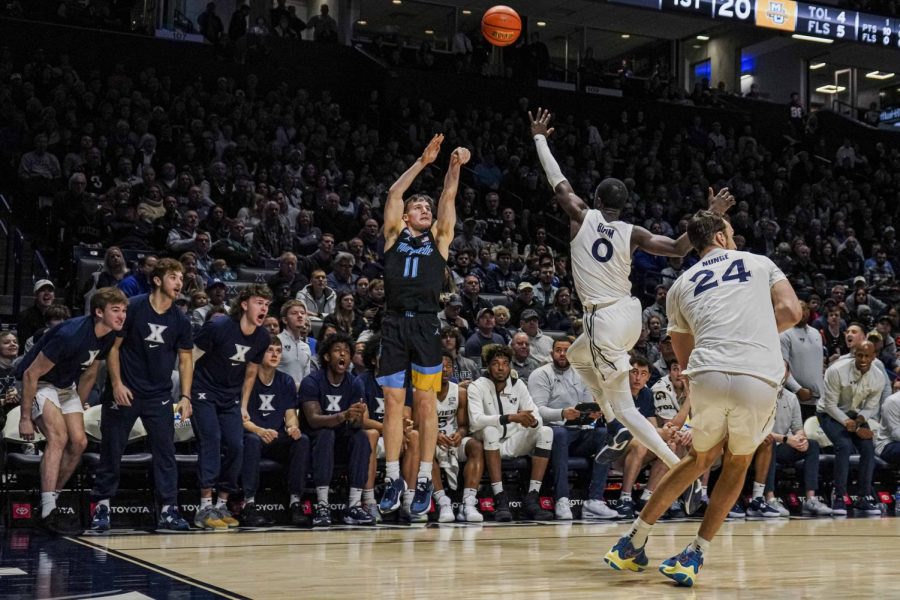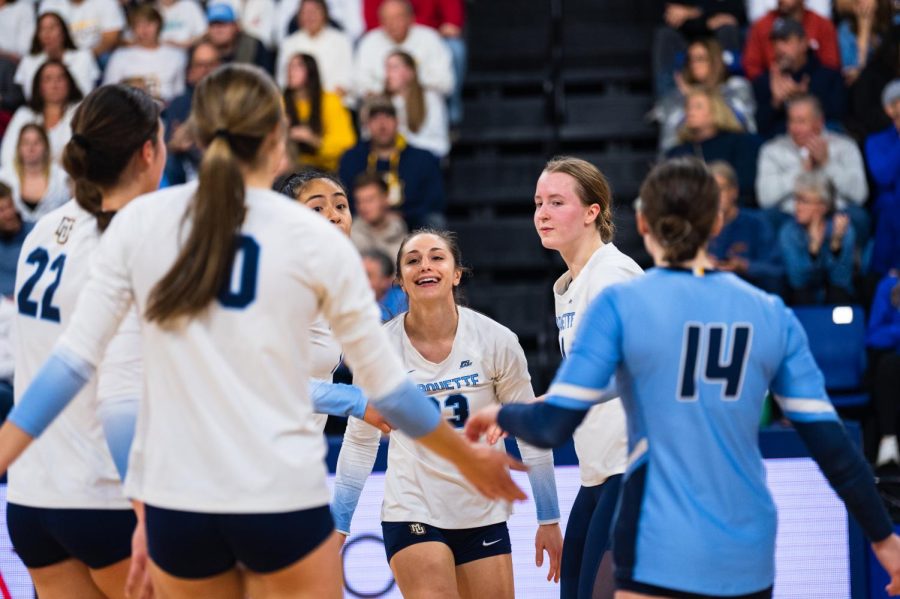
The busted brackets, the office pools, the terrible Cinderella clichés. It’s official, March Madness is here.
The NCAA basketball tournament is the pinnacle of the college basketball season. All of the hours the players put in the gym and the weight room are for this moment.
In these three weeks upsets will abound, champions will be crowned and legends will be made.
What people often forget is these superstar studs are students first. Whether they won or lost in the tournament on Sunday, college athletes will be at 8 a.m. class on Monday.
Working overtime
Marquette Women’s Volleyball Coach Bond Shymansky realizes the commitment student-athletes need to succeed both on and off the court.
“I think what student-athletes do is really impressive, with the amount of time the average student puts in class, with studying and projects,” Shymansky said. “On top of that you add 20, 30, 40 hours a week with travel and those sorts of things.
“It is two full-time jobs,” he added.
Reaching this level of excellence isn’t the easiest task for student-athletes balancing two full time schedules. To help them, the athletic department provides academic advisers.
According to Nikki Klingsporn, junior in the College of Business Administration and volleyball player, the academic advisers are a great resource to have.
“The academic advisers help set up tutors and classes, and they help us schedule our classes around our practice times,” Klingsporn said. “That’s something that’s hard to do, especially for students that are in harder majors.”
Shymansky added that the academic advisers help teach the organizational skills needed to succeed.
“They’re looking at the whole person,” he said. “They’re not so interested in the athletic component.”
To help the academic component, athletes are given their own study area in the Al McGuire Center called the Eagle’s Nest. It is available to them seven days a week and is a place for quiet study and tutoring.
Shymansky mandates use of the Eagle’s Nest for his first semester freshmen for a few hours three days each week. After freshman year, a sliding scale determines the number of study hours required: the higher the GPA, the lower the number of study hours.
Student-athletes must maintain cumulative GPA’s above 2.0 to stay eligible. Those failing to meet the requirement face academic probation and may have to sit out.
These standards have helped Marquette student-athletes do very well in the classroom. In the spring semester last year, they earned a cumulative grade-point average of 3.11, their highest average GPA since 2002. The all-university average for spring 2009 was 3.02.
“We don’t run a plantation here. I want and expect my players to get degrees even if it takes more than four years.” -Al McGuire
According to the most recent numbers from the U.S. Department of Education, Marquette spent more than $10 million on men’s basketball, the most of any Big East team.
This investment is paying off. The basketball program generated $13,446,395 in revenue for a profit of $3,139,847, Athletic Director Steve Cottingham told the Milwaukee Journal-Sentinel in January.
Although athletics generate profit for the university, Marquette’s main responsibility is to educate.
Looking at the most recent statistics provided by the NCAA, student-athletes are doing better than regular students.
The graduation rate for Marquette student-athletes who entered during the 2002-’03 school year was 89 percent, 13 percent higher than the all-university average.
The graduation rate for Marquette men’s basketball team was even more impressive. A full 100 percent of the basketball players in that time cohort graduated.
By comparison, the graduation rates for fellow Big East members were meager. DePaul was at 46 percent, Louisville at 38 percent and Connecticut at 27 percent. In-state rival Wisconsin-Madison was closer than Marquette’s conference counterparts, but still trailed — only 78 percent of its basketball players graduated.
Players who transfer do not count against a school’s graduation rate. Only student-athletes who do not finish the requirements for a diploma in six years or drop out of school completely count against a school.
The basketball team wasn’t the only Marquette sport with an outstanding graduation rate. The men’s golf, soccer and tennis teams all recorded a perfect 100 percent rate of graduation.
“I don’t know why people question the academic training of an athlete. Fifty percent of the doctors in this country graduated in the bottom half of their classes.” -Al McGuire
All of this work isn’t necessarily to get to the big leagues, either. When it comes down to it, only a select few will end up playing sports professionally.
Out of the 8,000 Division I and II men’s basketball players, only about 96 will end up playing professionally, according to the NCAA. Even those who do go pro only play for a few years.
Marquette currently has 12 players playing professionally around the world, according to Scott Kuykendall, associate athletics director of media relations. Of those 12, only four are in the NBA.
Only 1.8 percent of football players, 1.7 percent of men’s soccer players, 3.7 percent of men’s ice hockey players and 9.4 percent of men’s baseball players play in the pros, according to the NCAA.
All of these numbers add up to one thing — student-athletes are students first.
“We do everything we can to put that degree value in front of the value of hitting a ball hard or digging a ball in the air,” Shymansky said.
In unstable economic times like these, a college degree breaks the tie.
Former Marquette basketball player Chris Grimm, a 2006 graduate who currently plays professionally in Switzerland, had glowing remarks about getting his diploma.
“Graduating from Marquette was one of the happiest moments of my life,” Grimm said in an e-mail. “I worked hard for four years on and off the court, and I was rewarded for it with a degree.”
And although playing professionally now, Grimm plans to put his degree to work in the near future.
Grimm, a history and secondary education major, got a taste of teaching last year by substitute teaching in Menomonee Falls.
“When I am done playing I would like to go to grad school, and I have even thought of going to law school to enter into politics,” he said.
“Help one kid at a time. He’ll maybe go back and help a few more. In a generation, you’ll have something.” –Al McGuire
But it’s not just about pushing athletes through the system.
Shymansky, who had previously coached at Georgia Tech, said one of the biggest differences between his previous employers and Marquette was that the academic institution cares about all of its students, whether they are athletes or not.
“A lot of times academics and athletics are juxtaposed, they grind against each other,” he said. “There’s an in-fighting that happens on campus, and that’s not the way here. It’s really nice to see that culture of caring. The culture of taking care of our student athletes and wanting everybody to succeed. That’s different and I think it’s really special.”
Shymansky said the expectation of student athletes is straightforward: “Do great.”
“They expect that level of excellence in everything athletes are doing, including academics,” he said.
Marquette had 100 student-athletes named to the Big East All-Academic Team last year. Every sport was represented with the women’s track and field team leading the way with 32 representatives.
This year 54 student-athletes are seniors. When they leave their collegiate athletic careers behind them they’ll enter the workforce with something more valuable than a record-breaking high jump — they’ll have a Marquette degree.






